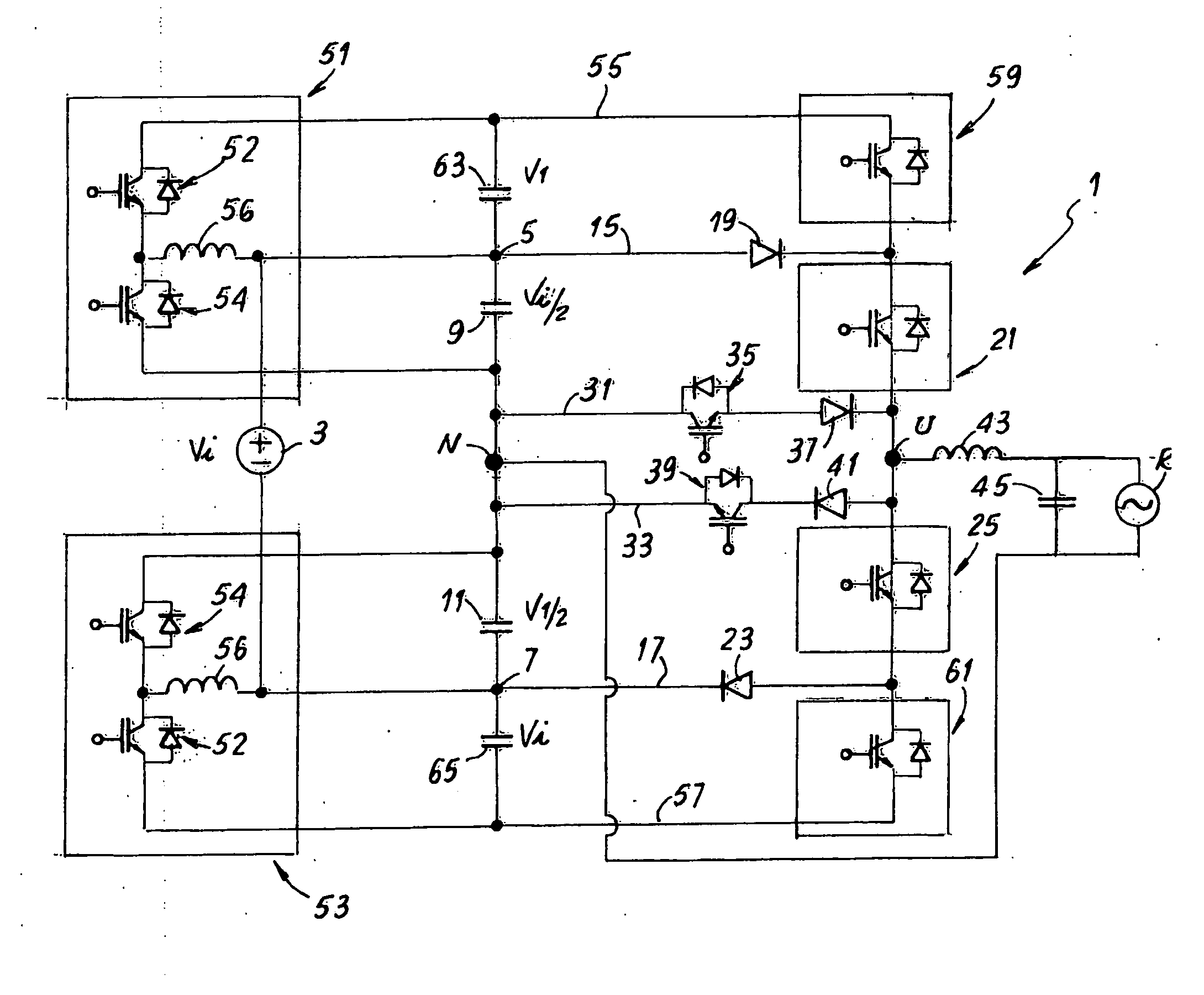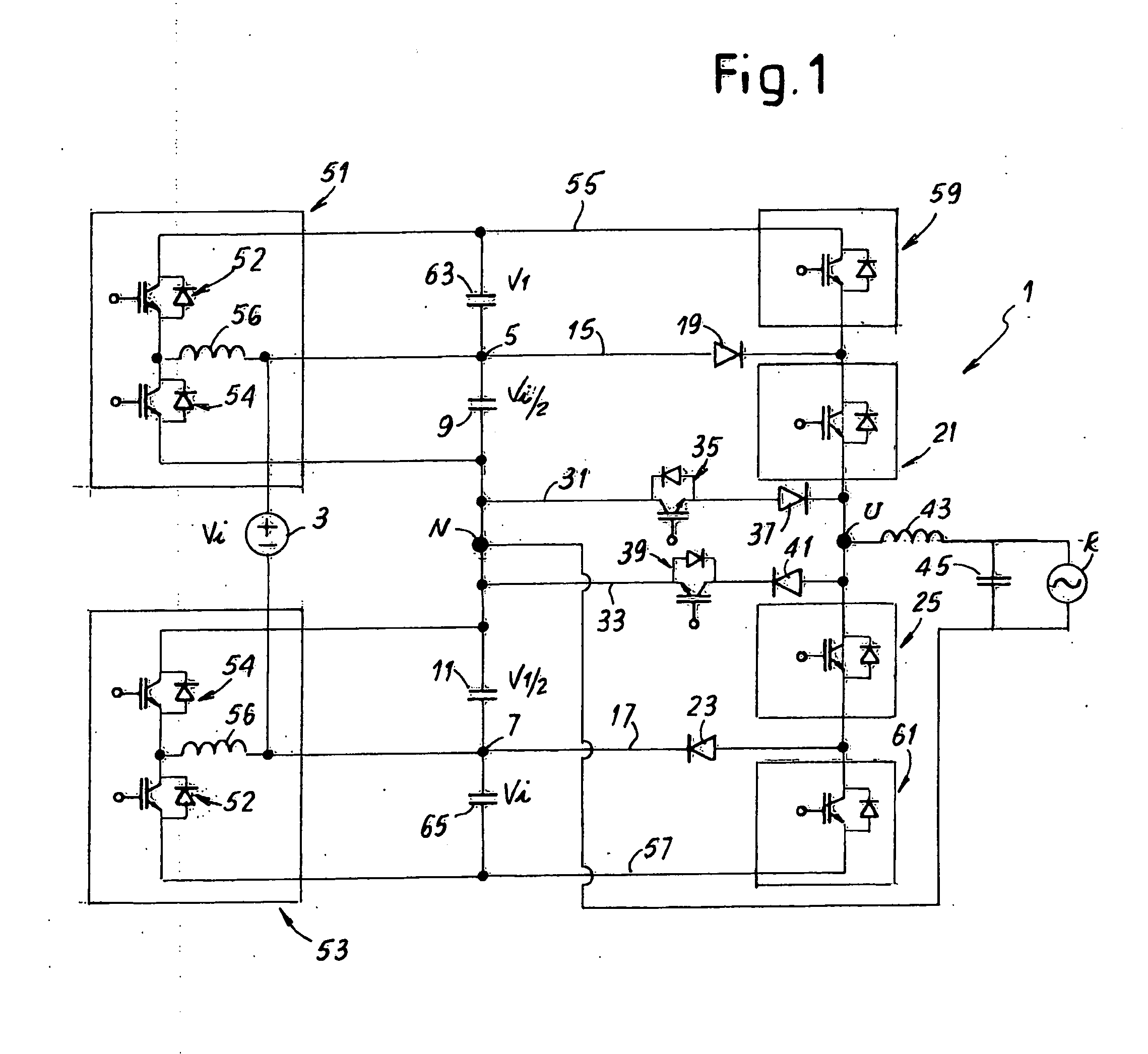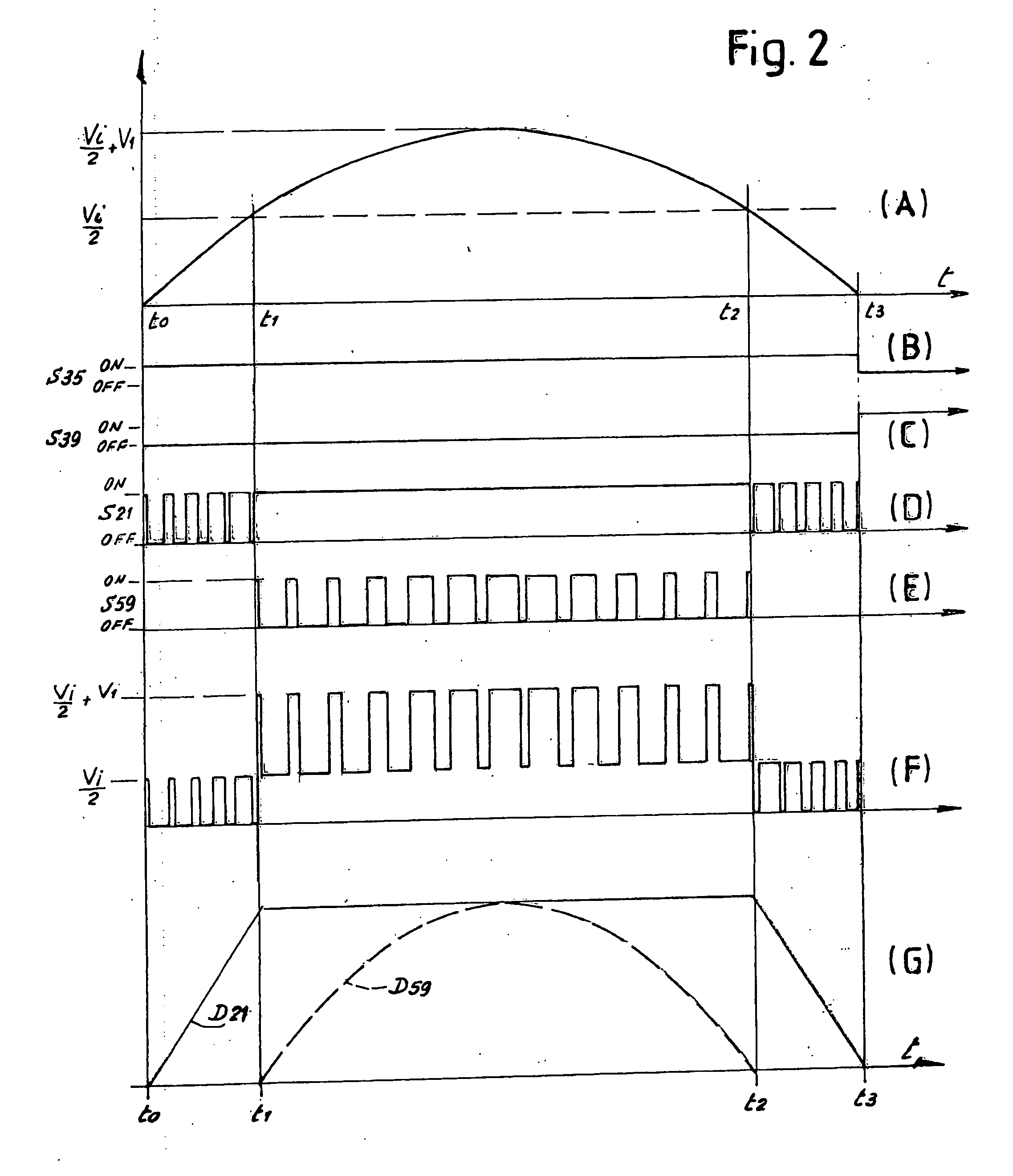Multi-Level DC/AC Converter
a converter and multi-level technology, applied in the field of dc/ac converters, can solve the problems of low direct voltage generated by photovoltaic panels or other alternative sources, heavy output filters, and low efficiency, and achieve the effects of reducing harmonic content, reducing output voltage, and increasing the number of voltage levels
- Summary
- Abstract
- Description
- Claims
- Application Information
AI Technical Summary
Benefits of technology
Problems solved by technology
Method used
Image
Examples
Embodiment Construction
[0040]FIG. 1 shows a first circuit diagram of a converter according to the invention, indicated as a whole with reference number 1. Reference number 3 indicates a direct voltage source, e.g. a group of photovoltaic panels, which supplies an input voltage Vi. The source 3 is connected to two input connections 5 and 7 of the converter 1. More in particular, in the diagram of FIG. 1 the positive pole of the source 3 is connected to the connection 5 and the negative pole of the source 3 is connected to the connection 7.
[0041]Reference numbers 9 and 11 indicate two capacitors connected respectively between the connection 5 and the neutral N and between the connection 7 and the neutral N of the converter 1. The voltage Vi of the source 3 is split at the ends of the two capacitors 9 and 11, across the plates of each capacitor being present a voltage difference of Vi / 2. Therefore, the input voltage of the converter 1, referred to the neutral N, is Vi / 2.
[0042]To the connections 5 and 7 a hal...
PUM
 Login to View More
Login to View More Abstract
Description
Claims
Application Information
 Login to View More
Login to View More - R&D
- Intellectual Property
- Life Sciences
- Materials
- Tech Scout
- Unparalleled Data Quality
- Higher Quality Content
- 60% Fewer Hallucinations
Browse by: Latest US Patents, China's latest patents, Technical Efficacy Thesaurus, Application Domain, Technology Topic, Popular Technical Reports.
© 2025 PatSnap. All rights reserved.Legal|Privacy policy|Modern Slavery Act Transparency Statement|Sitemap|About US| Contact US: help@patsnap.com



